About Us
Goodall Design Australia (Formally Goodall Sails and AHPC) has been proudly servicing Australian sailors since 1975 and carries an international reputation for the highest performing designs and product.
Greg and Brett Goodall have been competing at local and international events for decades. We have competed throughout Europe, America and Asia. During this time, we have gained unparalleled experience and been involved in many industry changing innovations. Through our products we are committed to bring this knowledge and experience to Australian sailors.


Goodall Design Australia specialises in F16 (VIPER), F18 (C2) and Taipan beach catamarans. We also provide sails, parts and service to ALL beach catamaran including.
*F18 (all designs) *F16 (all designs) *Taipan 4.9 *Taipan 5.7 *Mosquito *Paper Tiger *Cobra *Aclass *Stingray
With Goodall Design you know the guys who designed, engineered and built your boat. We want you to enjoy sailing as much as we do and through active support and training programs, we are sure your questions will never go un-answered.
Please read on for the rich history behind the Goodall name (Written By Helen Sharrock (Goodall):
Greg Goodall
Why Bendigo? Where do you sail in Bendigo?.... These are the questions we are often asked, particularly by many of our overseas visitors. These were the questions I too asked back in 1981 when I first met Greg Goodall. To understand the answer, you need to know the history of Australian High Performance Catamarans, and in particular, Greg’s history.
Six months after Greg was born, his father passed away. His mother, Nancy, was left to bring up 3 young boys – Allan, then 3½, Steve 2, and Greg 6 months... And yes, you guessed it; this was in Bendigo.
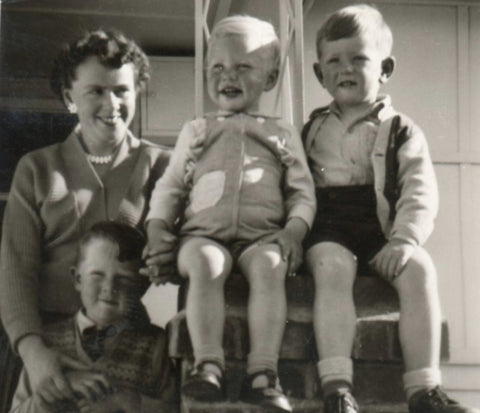
In the 1950’s there was very little assistance for single mothers. Nance worked to support her 3 boys but there was never any excess money to splurge on luxuries.
Nance’s parents, Ernie & Ida Campbell, played a very important part in the boys’ life, and it was Ernie (Pa) who introduced the boys to sailing.
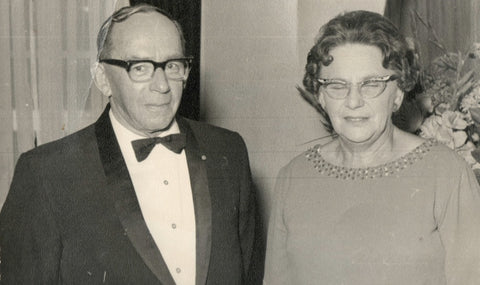
In the early 1960’s the nearby Campaspe River was dammed forming Lake Eppalock. It didn’t take long for a number of Bendigonians to see the potential of this lake as a sailing venue – Hence in 1962 the Bendigo Yacht Club was formed.
Greg’s grandfather was not a sailor... He had never sailed before – but he thought that it would be good for the three boys who were then aged between 9 & 12. He joined the yacht club, bought an old clapped out Mirror which he and the boys bought back to life.... And this is how the 4 boys, including Pa, learnt to sail.

As the boys grew into teenagers, their love for sailing grew... But they could not afford to buy boats. So... they built them. When Greg was only 14 years old he bought a kit and built his first Boat – A “Red Wing” designed Moth. Three years later he built his second moth where he modified an existing design.


During their teenage years, sailing became an integral part of Greg, Allan & Steve’s life. Many weekends were spent riding their push bikes the 25 km out to Lake Eppalock to sail – spending all day on the water, and then riding home. They worked part-time and would skimp and save all their $$’s to buy parts for their boats.
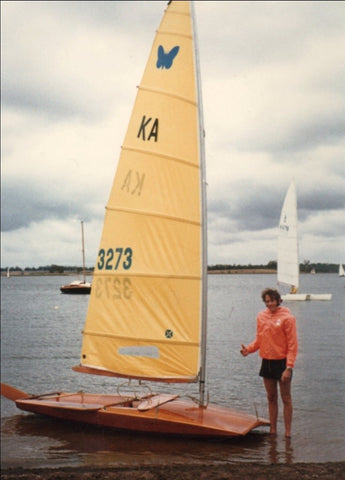

The need for speed, and the fact that there were a number of catamaran sailors at the yacht club, meant that it didn’t take long for Greg to see the light and graduate to catamarans. He built his first catamaran – Mosquito Catamaran – in 1973. It had now become the annual winter project to build “next season’s boat”
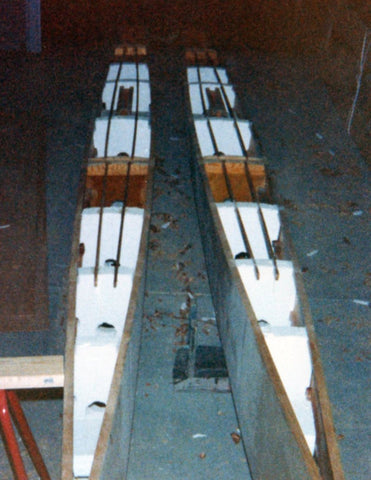

Also in 1973 he commenced his tertiary education at Bendigo College of Advanced Education (BCAE, now known as Latrobe University) in Electronics Engineering – working during his holiday periods at a local meat preparation factory.
Over the years he had become close friends with three Sail Makers – Leigh Dorrington, Dorian Walker & John Richardson. He had spent many hours at their various sail making premises and had learnt quite a lot about sail making.
Goodall Yacht Sails
Buying new sails was always an expensive exercise, and those who know Greg, know how competitive he is... And know that he would not be happy with an old warn out sail.... but how could he manage to keep himself in sails??? In 1975 he decided to buy a second hand sewing machine and a roll of cloth for the same price as a new sail....... Hence the start of GOODALL YACHT SAILS.


He used this sewing machine, not only to make himself sails, but also to make his friends sails... He marked and cut out the sails in the local Sunday school hall, and the spike marks are still in the hall floor today. Not only did this provide him with sails, but also gave him the means to earn a small income while finishing his tertiary education.
In 1976 he commenced a post-grad in Computer Science, but after spending all day in a windowless office, looking at a panel of blinking lights, he decided that this was not for him. He deferred his post grad and decided to give full time Sail Making a 2 year trial.... 35 years later and he is still at it!! With the help of a $9,000 loan from his grandfather, he set up his first official Sail Loft & Ship Chandlery above Sumner Electronics (now a restaurant) on the corner of Mitchell & Myer Sts, Bendigo.
It was about this time that he first met Jim Boyer. Jim’s sailing history was very similar to Greg’s in that he had learnt to sail at another nearby lake – Lake Cairn Curran. He had his first ride on a Catamaran in 1964 when he was only 9 years old and was hooked.

His education had led him to studying Mechanical Engineering at the Castlemaine Institute of Technology, but finished his final year at BCAE. He remembers becoming aware of Greg when he saw a pair of mosquito centerboards in the back of a car parked at BCAE. After Jim completed his tertiary education, he shifted to Melbourne to take up a teaching position.
Open Designs – The First World Championship
In 1979, with the dream to compete internationally, Greg moved to the A-Class. He and a friend, Bill Hughes designed and built two A-Classes. This design was called the “Raven”. He remembers this as a great “learning experiences” and notes that it was “not one of my better designs”. He learnt a lot about what worked, but in particular, what did not work.
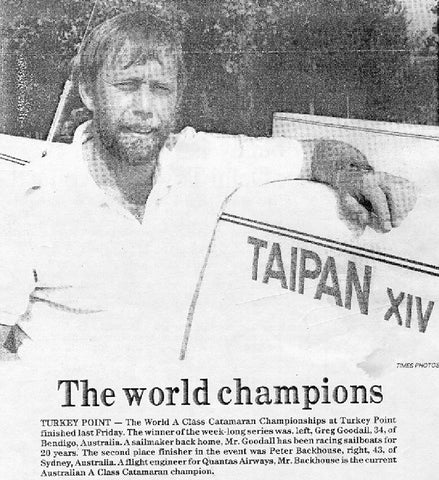
1980 was a big year – Using what he had learnt with the Raven project, he designed and built a totally new design of A-Class Catamaran. This was probably the first of many A-Class catamaran designs that would eventually become internationally known as the “AUSCAT” A-Class.
It was also in 1980 that he had his first taste of international competition when the A-Class World Championships came to Sydney. He finished 3rd. This was the year the aluminium wing mast had made its debut on the A-Class scene. Greg was the best placed boat carrying the conventional rig.
The following year he put a wing mast onto this same boat and won the A-Class National titles.
This same boat accompanied Greg on his first overseas experience when in 1982 he travelled to Cesenatico, Italy, for the A-Class World Titles. He finished 3rd ... AGAIN. Many say that he was beaten by the Maffia.
Also in 1980, with the help of a government decentralization grant, he built the first part of the existing factory in Long Gully Bendigo. This was extended in 1988 and again in 2002 to the current structure.

In 1981, Jim Boyer took up a teaching position, and shifted to Bendigo. Greg & Jim became very good friends, and over the next 3 to 4 years spent many evenings sharing their dream of designing and building the “ultimate” cat. Many a bottle of port was consumed as they discussed the pros and cons of various hull & foil shapes, and construction techniques into the early hours.
In 1983, while he was still teaching, Jim started building the A-Class hulls in a shed in his backyard. It was in this shed that Jim started playing with various construction techniques. One of these included a balsa wood – Only two balsa wood boats ever made it onto the water. At this time, fibreglass was deemed just too heavy for A-Class construction. Most of the boats were built using the traditional “torsion Marine Ply” technique.
One of the boats Jim built was for Greg’s brother, Allan, who took the boat to the world titles in New Zealand in February 1984, and won... Yes, Greg came 3rd again.
In 1985 Jim resigned from teaching and commenced building boats as a full time business – Boyer Catamarans. He built the factory Kangaroo Flat.
By mid 1985 Jim had built a number of AUSCAT A-Class catamarans and a number of these boats made it across to the world titles held at Long Beach, USA.... Greg, Jim & Allan (Greg’s brother) were amongst the Australian competitors that made the 24 hour flight to compete. Allan again won the title, with Greg in second place. The Goodall’s had won the double.

Australian High Performance Catamarans - AHPC
The Boyer-Goodall boats were well sort after by the Americans and as a result, most did not make it back to Australia. This was the start of the annual pilgrimage of heading overseas to compete and returning boat-less. The export business had commenced.
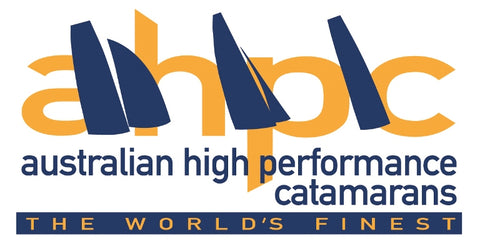
Greg remembers the flight over as the time that he & Jim designed the ultimate 16’ catamaran. They took their idea to the Australian Mosquito Association in the hope that they would be able to call it the Mosquito Mark III, but the Australian Mosquito Association did not want anything to do with it.
During the following years Jim learnt about Fibreglass construction, and by 1987 he built his first fibreglass catamaran (a Mosquito Catamaran). At this stage, the two businesses, Boyer Fibrecraft, and Goodall Yacht Sails were two separate companies, but as the demand for the Boyer Hulls with the Goodall Rig grew Jim & Greg set up a separate company – Australian High Performance Catamarans Pty Ltd – to act as the marketing arm for the two businesses. The main catamarans built at that time were the AUSCAT A, and the MOSQUITO.
Taipan
In early 1988, with the knowledge they had learnt from the A-Class, and Mosquito Catamarans, they finally built their “Dream” 16’ Catamaran – The first TAIPAN 4.9 was launched at Lake Bolac at Easter 1988. This Taipan was way ahead of any other 16’ Catamaran at this time, and was, and still is, a very successful sailing class in Australia. However, Greg & Jim were boat builders and designers, and lacked the marketing expertise to get this boat accepted internationally. Only a small number of boats were sold into the US and Europe.
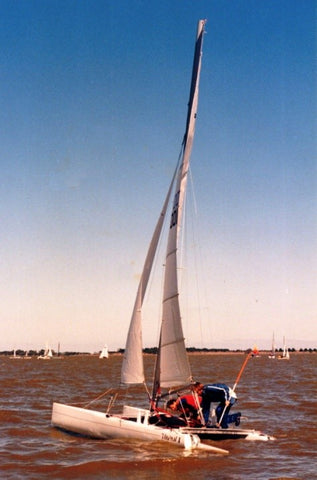
Over the next 19 years, Jim & Greg successfully designed, built and marketed numerous models of catamarans. Their most successful were the AUSCAT A-Classes (5 models in all) which were sold throughout the world. On the domestic market, they sold both the 4.9 & 5.7 Taipan Catamarans.
F18 Revolution
In 2004, Greg was contacted by Martin Fischer to develop a rig for his Capricorn catamaran. During this development process, Greg and Martin modified the original hull design (to become what they released in 2005). The Capricorn was a gigantic technological leap for the F18 and single handedly changed the F18 market forever, leaving the other manufacturers playing catch-up for over a decade.
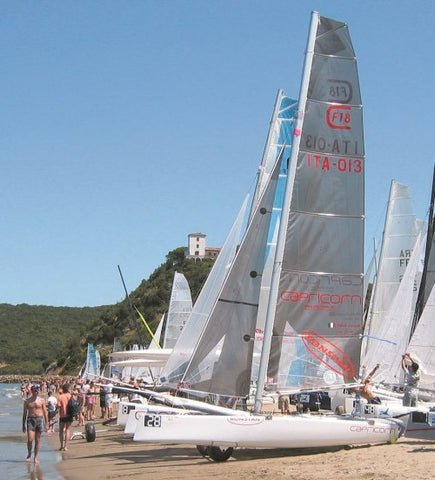

This lead to many successful tours of Europe with the F18 and Aclass, where AHPC begun to firmly grasp its position as one of the top Catamaran design and manufacturing companies in the world.
Moving with the Times
In 2006, the cost of fiberglass manufacturing in Australia became such that it was no longer viable to build the fiberglass components in Australia. The manufacture of the hulls and other fiberglass components was taken offshore to Indonesia, and eventually Boyer Fibrecraft closed its doors. In October 2006, Greg bought Jim’s share of Australian High Performance Catamarans.
In 2006, Greg moved the hull design into the digital world by designing the VIPER completely on Catia; the same program used by Boeing, Airbus and Bell. The design was the culmination on lessons learned over 30 years and it is still without a doubt the fastest 16 foot catamaran around.
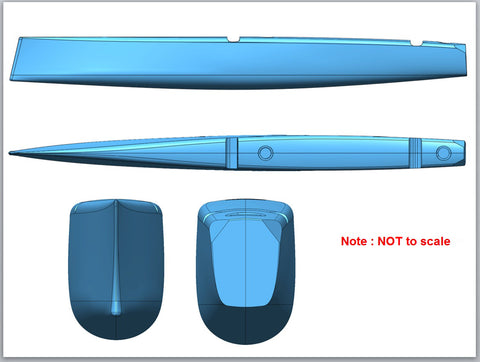
In 2009, after finishing a degree in industrial design and mechanical engineering, Greg’s eldest son joined the family business and his first duty was to CAD model Greg’s newest F18 creation - the C2. After sailing the Capricorn for almost 5 years, Greg had a long list of improvements, so the platform was designed from the beginning and the rig improvements were carried over from the Capricorn.
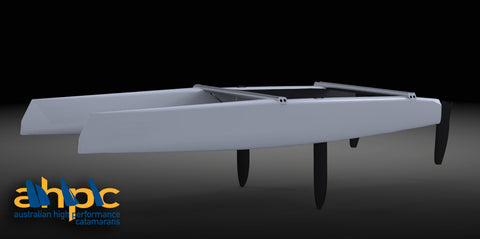

Goodall Design
After many years of discussion and almost 12 months' research and development, the decision was made to return to Goodall branding - but now they did more that sails. They designed everything... So Goodall Design was the perfect fit.

With over 40 years’ experience in the field, Goodall Design, is able to design every element of their products in-house. This ensures we are 100% confident that we can provide our customers with the most up to date and best product possible.
Goodall designed and built boats are consistently showing their supremacy internationally, with the C2 winning the 2011 World F18 titles and the VIPER blitzing absolutely everything in its category.
Goodall Design has an amazing team at their main production plant in Long Gully, Bendigo, where all sails and rigging are manufactured. Hulls and other fiberglass components are now manufactured at our new facility in Thailand.
Goodall Design Australia
In late 2017 the international commercial operations of Goodall Design was moved to Europe to be central to the international market. The technical head office has stayed in Australia where Greg and Brett continue to design, develop and improve Goodall Design product.

In response to this shift, Brett and Greg Goodall created Goodall Design Australia to specifically focus only on the Australian sailors.
“Moving the management to Europe is a fantastic move for us (Brett and Greg), because it reduces our international commitments and frees up much more of our time to serve the Australian market” – Brett Goodall
Goodall Design Australia continues to manufacture and stock parts and sails for all Australian classes, including:
*F18 (all designs) *F16 (all designs) *Taipan 4.9 *Taipan 5.7 *Mosquito *Paper Tiger *Cobra *Aclass *Stingray

